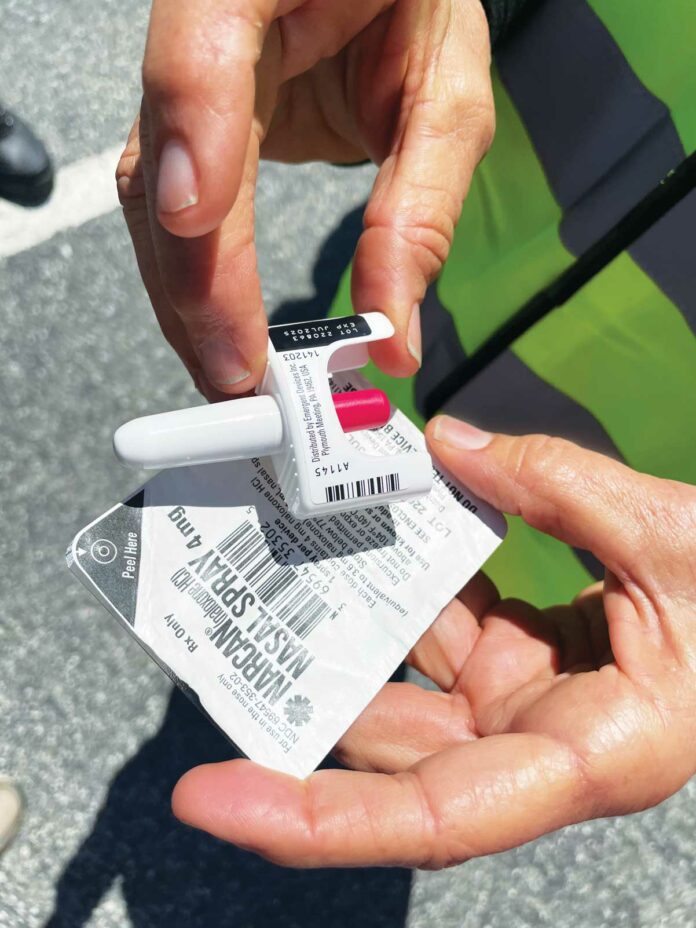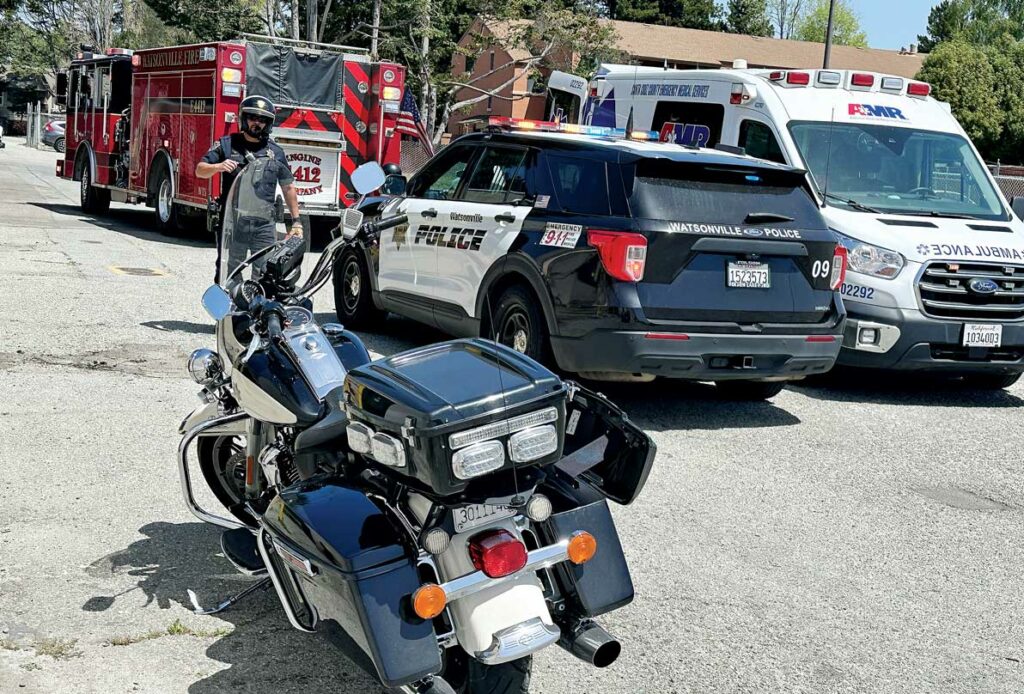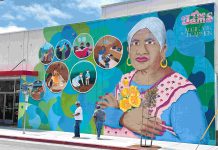
On Monday afternoon, a call came over police radio that emergency workers have become all too familiar with: a man had overdosed on Fentanyl and was unconscious.
Watsonville Police found the man in an alley behind a shopping center. They quickly administered Narcan, a drug used to reverse the effects of opiates.
Within minutes, the man revived and was conscious and talking.
Such incidents are common for paramedics, law enforcement officials and others whose careers put them in close contact with drug addicts.
On Saturday, a group of local healthcare workers distributed an estimated 500 boxes of Narcan to citizens, giving them a tool in case they find someone suffering an opioid overdose.

Steve Henderson says his son Tom had completed a drug addiction rehabilitation program in 2019 and was working at Kirkwood Mountain Resort when he injured his knee.
Doctors gave him painkillers, which triggered a relapse.
“Then when he ran out, he started buying off the street,” Henderson says.
Tom’s mother found him unresponsive one morning and Tom died before paramedics arrived, he says.
Henderson was one of roughly 300 people who came to Cabrillo College on Saturday to get free doses of Naloxone, a drug also known as Narcan. Given nasally, the drug reverses the effects of opiates in people who are overdosing.
“I’ve been meaning to get some for a while, just in case I ever run into someone who overdosed,” he says. “You never know when you might need it.”
The drive-thru giveaway event was sponsored by SafeRx Santa Cruz County (SafeRx), Health Improvement Partnership (HIP) and the Santa Cruz County Office of Education.
County Superintendent of Schools Faris Sabbah says that people began lining up at 10am for the 12pm start time.
With increasing numbers of overdoses, caused largely by the painkiller Fentanyl, distributing the Narcan dispensers is an important step to stop potential overdose deaths, Sabbah says.
SCCOE has already distributed the dispensers to schools countywide.
“We recognize that the opioid epidemic is something that is hitting close to home here in Santa Cruz County,” he says. “The risks to our youth and our community are very high, and we feel like this is one step we can take.”
HIP Senior Program Coordinator Ali Hayes says it is vital to get Narcan into the hands of teens, who could encounter someone overdosing at a party or other social event.
“Teens are definitely going to be part of the solution in addressing the opioid crisis,” she says.
Hayes says that drug dealers are increasingly mixing Fentanyl—a powerful and relatively inexpensive painkiller—into drugs like Adderall, Xanax, cocaine and even black market marijuana as a way to both increase their potency and addictiveness and maximize profits.
With dealers sending out drug “menus” to their customers through social media platforms such as Instagram and Snapchat, it is easy for teens to get their hands on tainted drugs, Hayes says.
With such pervasiveness, it is important for parents to monitor their kids’ social media accounts and to talk to their teens about drug abuse. Anyone considering experimenting with black-market drugs should never do so alone and keep a dose of Narcan handy, Hayes says.
And avoid pills and powder, she adds.
“Because Fentanyl is in there,” she says.
“Teens that are thinking about experimenting who might purchase something on the internet might not realize it has Fentanyl and a friend could overdose right in front of them,” she says. “If they have Narcan, they might be able to save a life.”
Narcan was recently approved by the U.S. Food and Drug Administration for over-the-counter sales.
That comes as a mixed blessing since it is easier to get, but insurance companies do not typically cover over-the-counter drugs, which can run as much as $50 for a box of two, says Dr. Jen Hastings, a consulting physician for HIP and Safe Rx.
Untangling that quagmire, she says, will require advocacy at the state level.
And making the drug available to everyone is vital, as overdose deaths in California have tripled over the past two years, Hastings says.
“This is going to make a difference,” she said. “This is going to save lives.”
Hayes says she hopes to host more Narcan distribution events in the future, but adds it will take additional funding for the nonprofit to be able to do it.
A steady stream of vehicles came through the line to receive their boxes after getting a short primer on how to use the devices.
“I hope I never have to use it,” says Aptos resident Trevor Strudley. “We know this is a problem in the community.”
Strudley says he has not had experience with drug addiction, but many who came said that their personal stories prompted them to come.
“I have family that have passed away from overdoses, so I’m pretty close to it.” says Rosie Cervantes of Watsonville, who was in tears as she spoke. “I want to be ready, and have the resources to help others to be ready.”
Kristen O’Connor, an outpatient office space addiction nurse with Santa Cruz Community Health, says that it is also important to combat the stigma that comes with drug addiction.
Many addicts, she says, still face judgment from the public and shame for themselves, which can be a barrier in seeking help.
“We’re really trying to combat that fear, shame, stigma,” she said. “I think that’s partly on us for not making them feel like their lives are worth as much as somebody else with a chronic medical condition.”
•••
Signs of an overdose
• Blue lips or fingernails
• Pale or ashen skin
• Gurgling/choking/snoring sounds
• Small pupils
• Slow or shallow breathing
• Unresponsiveness
• Vomiting
• Inability to speak
• Faint heartbeat
• Limp arms and legs










